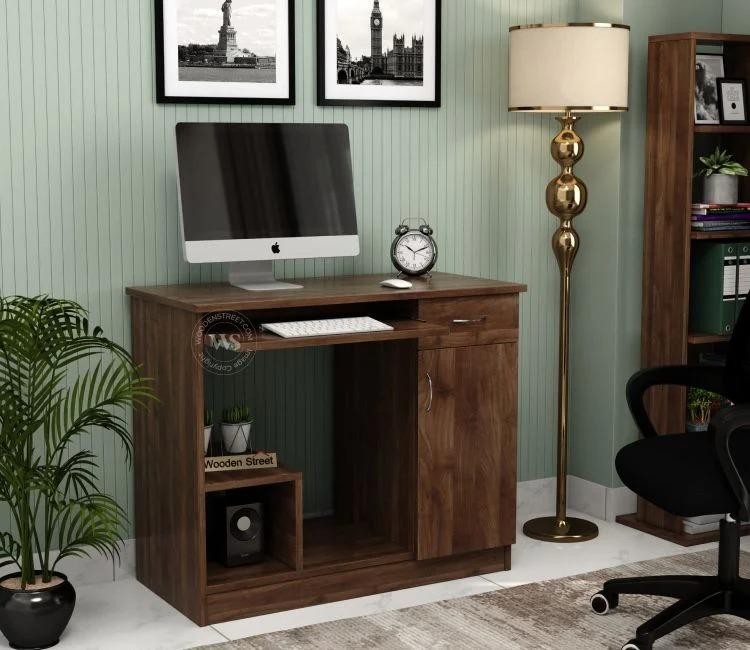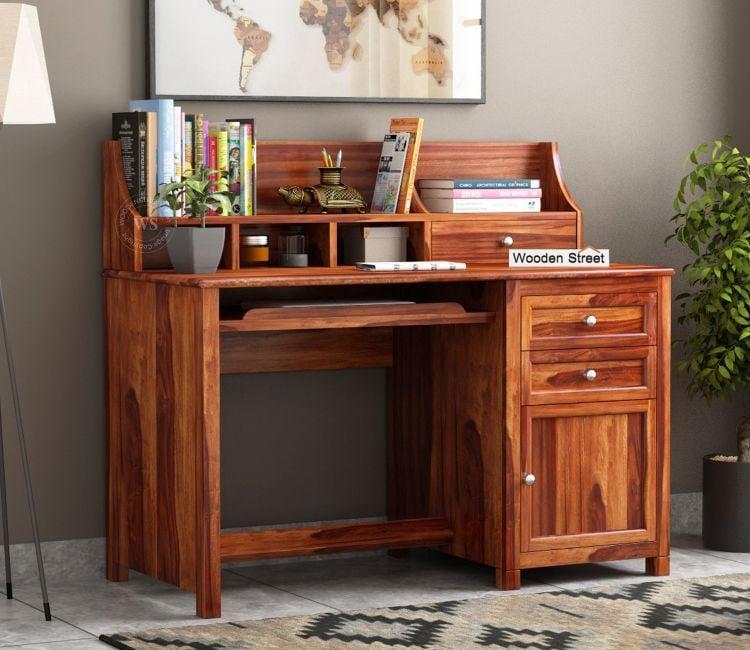Creating a conducive learning environment at home begins with choosing the right furniture—especially a study table for your child. A thoughtfully selected study table can significantly enhance concentration, encourage better posture, and instill a sense of responsibility in kids. Whether your child is in primary school or entering teenage years, the right study table can create a dedicated space for learning, creativity, and growth.
In this guide, we’ll walk you through the essential factors to consider when selecting the perfect study table for kids, along with popular styles, safety tips, and design ideas to inspire your setup.
Why a Study Table Matters for Kids
Children need structure, especially when it comes to studying and homework. Having a dedicated space to sit, write, and focus helps establish discipline and routine. A proper study table minimizes distractions and helps children mentally switch into “study mode” once they sit down. Moreover, an ergonomically designed table and chair can prevent health issues like neck and back strain at an early age.
1. Consider the Child’s Age and Learning Needs
One of the first things to assess is your child’s age and what kind of learning activities they engage in. Younger children need a table that allows ample space for drawing, crafts, and writing, while older kids might require storage for textbooks, laptops, and school supplies.
For toddlers and preschoolers:
-
Look for smaller-sized tables with rounded edges.
-
Include colorful or themed designs that spark interest.
For school-age children:
-
Choose tables with spacious tops and drawers for notebooks and stationery.
-
Opt for a setup that accommodates growth and changing academic needs.
For teenagers:
-
Invest in more functional furniture that includes storage, space for electronics, and a larger work surface.
2. Right Size and Height
Ergonomics play a key role in ensuring your child maintains good posture while studying. A table that's too high or too low can cause discomfort and discourage them from sitting for long periods.
Ideal size guide:
-
Table height: Approximately 22 to 30 inches depending on your child’s age.
-
Chair height: Should allow feet to rest flat on the floor or a footrest.
-
Ensure the child’s elbows rest comfortably on the table surface at a 90-degree angle.
Adjustable tables and chairs are a great option for growing kids, allowing you to tweak the height as needed.
3. Prioritize Storage Options
Kids tend to accumulate a variety of study materials—books, art supplies, gadgets, and more. Choosing a study table with adequate storage helps keep everything organized and within reach. Look for:
-
Drawers: For pens, markers, and other small items.
-
Shelves: To store books, toys, or educational games.
-
Cabinets: For extra notebooks, craft materials, or even a small backpack.
Having storage incorporated into the table can also encourage kids to clean up after themselves and develop organizational habits.

4. Choose a Durable and Easy-to-Clean Material
Children can be messy, so selecting a sturdy table made from durable, easy-to-maintain materials is important. Popular options include:
-
Engineered wood: Affordable, smooth-surfaced, and easy to clean.
-
Solid wood: Long-lasting and premium-looking but may require more care.
-
Plastic or PVC-coated tables: Lightweight, colorful, and ideal for younger kids.
Ensure that the surface is stain-resistant, scratch-proof, and doesn’t absorb ink or paint easily.
5. Safety is Non-Negotiable
When it comes to kids’ furniture, safety should never be compromised. Make sure the study table meets basic safety standards:
-
Rounded edges and corners to prevent injury.
-
Non-toxic finishes that are safe for children.
-
Sturdy construction that won’t tip over easily.
-
Smooth drawer mechanisms with no sharp or pinch-prone components.
Additionally, avoid tables with glass tops or metal edges that can be hazardous for children.
6. Style and Design That Appeals to Kids
Children are more likely to use their study table regularly if they feel connected to it. Bright colors, cartoon themes, or personalized elements can make the table more inviting.
Design ideas to explore:
-
Tables in their favorite color or character theme.
-
A chalkboard or whiteboard tabletop for drawing or notes.
-
Customizable nameplates or labels for drawers.
-
Built-in task lighting for added functionality.
For older kids and teens, go for neutral colors or wood finishes that blend with modern interiors and appeal to their maturing taste.
7. Placement of the Study Table
Even the best-designed study table will underperform if it’s placed in a noisy or poorly lit area. To maximize focus and natural light, place the table:
-
Near a window for natural lighting during the day.
-
Away from high-traffic or noisy zones like kitchens and living rooms.
-
Against a wall or in a corner for minimal distractions.
-
With access to plug points for charging devices (for older kids and teens).
Adding a pinboard, calendar, or motivational posters above the desk can help create a complete and inspiring study corner.

8. Multi-Purpose Features for Versatility
In smaller homes or shared spaces, a multi-functional study table is a great choice. Look for features such as:
-
Foldable or wall-mounted tables that save space.
-
Convertible tables that double up as craft stations or laptop desks.
-
Adjustable tops for drawing or writing at an angle.
These additions make the table more versatile, supporting both schoolwork and recreational activities.
9. Set a Budget That Balances Quality and Utility
While it might be tempting to go for the cheapest option, consider the long-term usage and durability of the table. A slightly higher investment can yield better quality, more storage, and ergonomic benefits.
Ask yourself:
-
Will it last for several years?
-
Does it grow with the child’s needs?
-
Does it offer good value in terms of functionality?
Compare different models and features to find a table that offers the right balance between cost and comfort.
Conclusion
A dedicated and well-designed study table for kids can make a significant difference in their academic journey. It encourages focus, nurtures independence, and supports a healthy learning environment right at home. From ergonomic design and smart storage to fun styles and safety-first features, there's a lot to consider before making the right choice.
Take time to observe how your child studies, what they need at hand, and what makes them comfortable. With thoughtful planning, you can set up a study space they’ll love to use every day.

